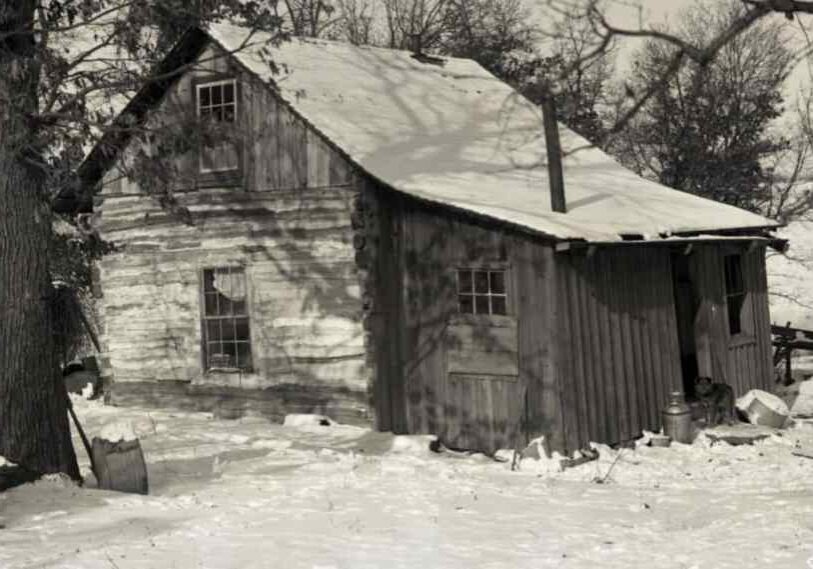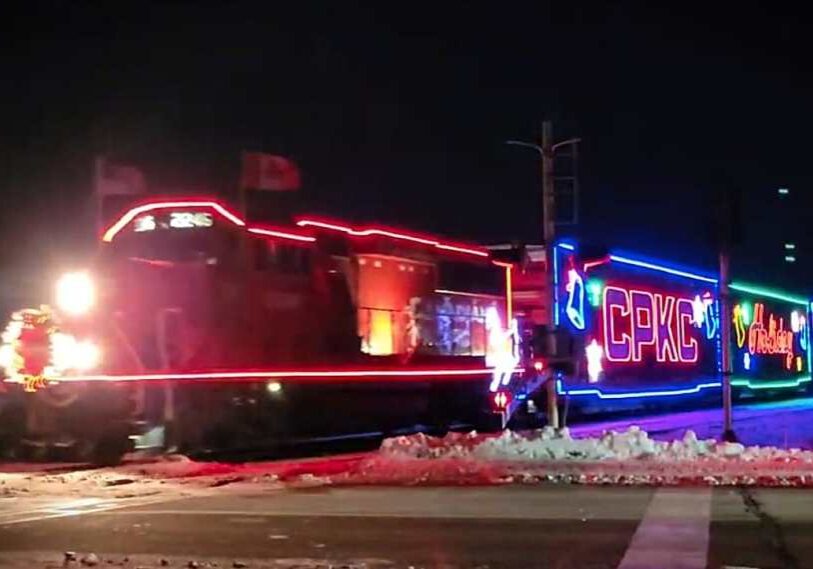A Slow Moving Vehicle

PRESTON TOWNSHIP, FILLMORE COUNTY — It was a gorgeous June night when I waved to the teenage Amish boy as his buggy rolled slowly past our driveway along County Road 12, four miles south of Preston. He was heading west and resting his horse before ascending the hill toward Highway 52, as most Amish do. He waved back at me.
A few minutes later I heard a loud bang. I walked over to the end of the driveway and looked up the hill, only to see a giant fireball from the setting sun blinding me. I couldn’t see anything. All was quiet, calm.
My wife Pat and I didn’t know about the accident until the sound of sirens broke the quiet of the evening. And when the police stopped on the hill a tenth of a mile from our farm, we knew something tragic had happened. Law enforcement cordoned off our road at the Highway 52 intersection and parked a Sheriff’s squad car at our driveway, turning traffic back east.
Henry Hershberger, 15, who lived a few miles to the south of us, was killed when his buggy was rear-ended by a pickup truck. Unforgettably, I was probably the last person to see the young man before his life ended on June 29, 2021.
Amish of Fillmore County
Fillmore County has seen many immigrants come to the area since Native Americans were forced off the land and it was settled by Europeans in the 1800s. Our newest neighbors, the Amish, began arriving here in the mid-1970s from Ohio, seeking affordable land to farm. And once these first few arrivals settled here, Amish from other states soon joined them. Today, the Amish population in Fillmore County is estimated at more than 1,000 people, mainly in clusters near Canton-Harmony and Granger-Florenceville, on the Iowa border.
The Amish are an Anabaptist Christian sect which diverged from the Mennonites some 300 years ago. These groups were persecuted in Europe for their religious practices, including adult baptism, and began immigrating to America in the early 1700s in pursuit of religious freedom. Following Bible scripture, the Amish choose to “be of this world, but not worldly,” eschewing modern technology. They opt not to have electricity or plumbing in their homes, and use horsepower for farming and transportation. Diesel engines are used to power windmills and machinery. A German dialect is spoken at home. Children attend school through the eighth grade in one-room schools, learning English as their second language. The Amish believe in nonresistance and seldom defend themselves in court.
The Amish in Fillmore County are Old Order Amish and take a more conservative view of worldly ways than other Amish. A local bishop oversees each small community, regulating conduct as it relates to interaction with the modern world. There are seven church districts in Canton/Harmony and three in Granger/Florenceville. Members rotate hosting biweekly church services in their homes.
Today, the sight of Amish buggies on the roadways is a common occurrence. They are an industrious people: farming, operating sawmills, and working as carpenter crews (hiring local drivers to take them to worksites). They are self-sufficient in their foodways, but an Amish economy has evolved with farm bakeries, shops that cater to Amish household needs, and home industries like basket weaving and furniture making. Amish tours bring paying tourists to Amish farms to learn about their culture and traditional ways.

Some Amish choose to display the fluorescent triangle. This buggy was traveling near the Iowa border. (Photo by Renee Bergstrom)
State of Minnesota vs. Hershberger
After nearly fifty years in Fillmore County, Amish interaction with the local English (as they call the non-Amish) is fairly typical. In the rural areas of south Fillmore County, they are neighbors and friends. But it hasn’t always been smooth sailing, with old customs bumping up against modern ways.
In 1989, local Amish men refused to obey a state road law, citing their religious beliefs. Minnesota statute requires that slow-moving vehicles (SMVs), those that travel less than 25 miles per hour, display a visible fluorescent orange-red triangular sign when being operated on public highways. You see them on farm machinery being driven on roads. The basis for the law is public safety: slow-moving vehicles on roads with high speeding traffic pose a potential hazard.
Between February and September 1988, 14 Amish men received citations for operating their buggies on a public highway without displaying the SMV sign. Two men were jailed on contempt of court charges after they refused to pay a fine or serve community work. At the time, there had been no accidents involving Amish buggies in Fillmore County.
In December of that year, Fillmore County District Court Judge Clement Snyder rejected the Amish contention that the law violated their constitutional right to freely exercise their religious beliefs. The Amish believed that if forced to display the SMV sign they would be putting their faith in “worldly symbols” and not in God. Judge Snyder’s contention was that since some Amish outside of Fillmore County do use the orange-red triangular signs on their buggies, that it was not unreasonable for the 14 defendants to comply with the law. The defendants appealed their decision to a higher court.
In August 1989, the Minnesota Supreme Court, in State of Minnesota vs. Hershberger et al (Hershberger is a common Amish surname), ruled that the lower court had made its decision improperly on the idea that a religious belief must be shared by the whole religious community.
The Supreme Court also ruled that the District Court failed to show evidence of accident incidents involving vehicles displaying SMV signs versus those not displaying it. In other words, there was no evidence that the 14 defendants were creating a safety risk.1
The Supreme Court found that a less “worldly” alternative existed to the garish SMV signs. The Amish said in their appeal that since they do not object on religious grounds to outlining the backs of their buggies with silver reflective tape (a color they consider acceptable because it is not “loud”), or to displaying red lit lanterns as a supplement to the silver reflective tape, that there does exist a less restrictive alternative to serve the state’s public safety concerns. The Supreme Court ruled in favor of the defendants.2
June 29, 2021
Since 2018 there have been three fatal accidents involving Amish buggies in Fillmore County. On August 31, 2018, 21-year-old William Stutzman was killed when a vehicle driven by Connor Keene of Canton drove into the buggy Stutzman was driving near Amherst. His two brothers survived the accident. Keene later pled guilty to criminal vehicular homicide with alcohol impairment.
On December 20, 2019, 12-year-old Joe Mast was killed when the buggy his father Menno was driving was involved in an accident with a vehicle on Highway 44 west of Harmony. They were on their way to a Christmas pageant. Menno and his son Ezra were hurt with non-life threatening injuries. No charges were filed in the incident.
And Henry Hershberger, the friendly young man I exchanged waves with on that fine June evening. He was running an errand to an Amish farm on June 29, 2021 to get some horse liniment. A truck being driven by Joseph Perry of Hastings, Minnesota, ran into his buggy, killing him as well as his horse.

In 1996, the Minnesota Legislature designated a section of Highway 52 the AMISH BUGGY BIWAY as part of a safety program to alert drivers that slow-moving Amish buggies may be traveling this route. (Photo by John Torgrimson)
Perry was heading home from a resort in Spring Grove, with his two children in the backseat. Perry later told law enforcement that he was driving up the hill on County Road 12 with the sun in his eyes the whole time. He said he saw something in the lane, but could not swerve in time, and hit the buggy. Perry declined to take a breath test at the scene. When asked for his driver’s license, he said he didn’t have one. Law enforcement later downloaded data from Perry’s GMC Sierra and found that the vehicle was traveling at approximately 53 miles an hour at the moment of impact. It also revealed that Perry did not apply his brakes prior to the crash.3
According to the criminal complaint, after receiving a search warrant, the authorities found a controlled substance as well as drug paraphernalia in Perry’s vehicle. He was later charged in Fillmore County District Court with eight counts, including felony possession of a controlled substance (marijuana). Other charges included driving after suspension, careless driving, open bottle, and additional charges related to drug possession. Unconditional bail was set at $10,000.
During an Omnibus Hearing on August 22, 2022, Perry’s attorney asked that some of the charges be dismissed, challenging the seizure and search of his client’s pickup.
Fillmore County Attorney Brett Corson called on Sergeant Jessy Betts of the Fillmore County Sheriff’s Office, who was in charge of the accident scene the night of the accident, to testify as to the procedures followed in the investigation.
Betts told the court that Perry’s pickup was impounded because the vehicle was involved in a fatal accident, and that they needed to secure any evidence, including data from the truck’s computers. On June 30, Betts carried out an inventory of the vehicle. Once a bag, believed to contain a controlled substance, was found, the inventory ended and a search warrant was obtained. Two search warrants were granted, one for search of controlled substances, the other for vehicle data systems. No other testimony was given during the hearing. In October, Judge Matt Opat denied Perry’s motion to dismiss any of the charges.
At a pre-trial hearing on February 6, 2023, Perry pled guilty to two counts – 5th degree drug possession of marijuana (gross misdemeanor) and driving after suspension (misdemeanor) – on the condition that six remaining charges were dismissed, including felony drug possession. Sentencing is scheduled for March 27, 2023. Perry faces up to one year in jail and a $3,000 fine.
Meanwhile Perry remains on bail and is presently a resident of the Minnesota Adult and Teen Challenge, a chemical dependency program in Minneapolis. He is scheduled for release from the treatment program in May 2023.
Each side has its story
I gave Henry Hershberger’s father and brother a ride to the courthouse the day of the August, 2022 Omnibus hearing. They sat quietly in court, their straw hats sitting on their laps. It was the first time they had been in a courtroom and the first time they had seen Joseph Perry in person, the man involved in the accident that killed Henry.
“I think it was the sun,” the father told me after the hearing. “He (Perry) couldn’t see what was happening. I don’t think he intended to run into Henry.”
In the car on the way home, the father added, “I understand why it takes so long in the courts. Each side has to tell its story; it has to be fair for both sides.” This seemed incredibly intuitive for someone who had never been in a courtroom before and witnessed the justice system at play. In fact, for the Amish, both nonresistance to authority and forgiveness for those who harm them are central tenets of their faith. Amish people seldom defend themselves in court.
It is hard to know if any Slow Moving Vehicle sign on the back of Henry Hershberger’s buggy would have saved his life that night – due to the fireball at the apex of the hill, the speed of the vehicle, and the wooden buggy on the narrow road.
The Amish put their faith in God, accepting whatever comes their way, which instills in them a spirit of forgiveness. A little over a year after Henry was killed, the Hershberger family was letting the courts and God decide what would happen to Perry. Nothing was going to bring their boy back.
Editor’s note: In 1996, the Minnesota Legislature designated a section of Highway 52, from the Highway 16 intersection south of Preston to Prosper, MN, as the AMISH BUGGY BYWAY. This designation is both a safety program, alerting drivers that Amish buggies may be traveling this route and to drive accordingly, as well as tourism promotion for those interested in the Amish community. Sources: 1JUSTIA US Law, State vs. Hershberger 2 ibid 3 Fillmore County District Court complaint Loni Kemp contributed to this article.






